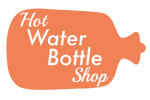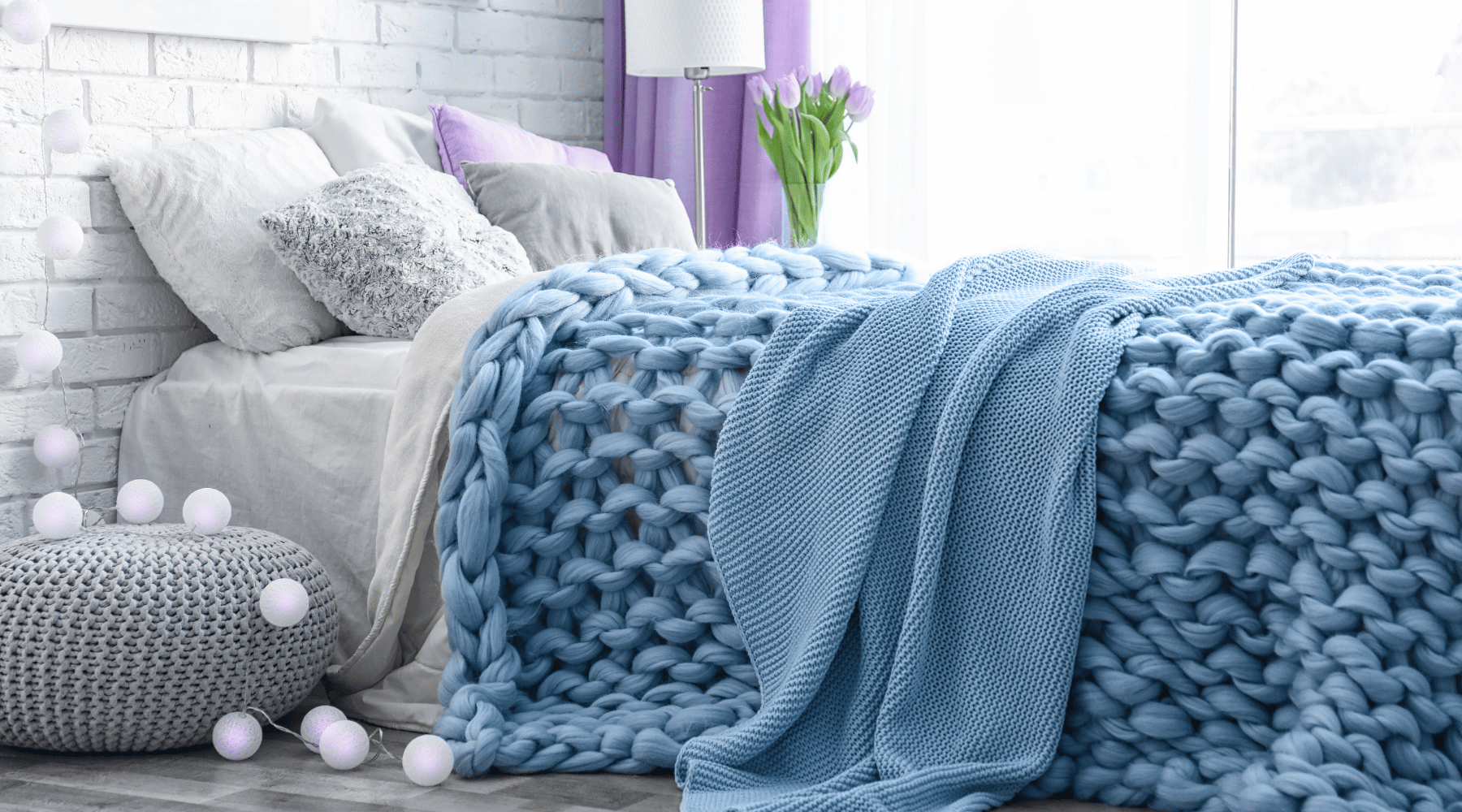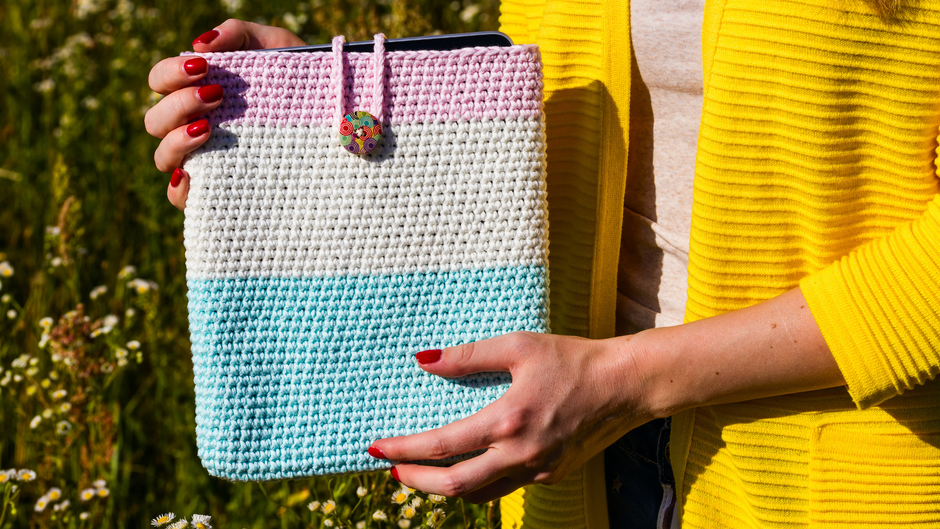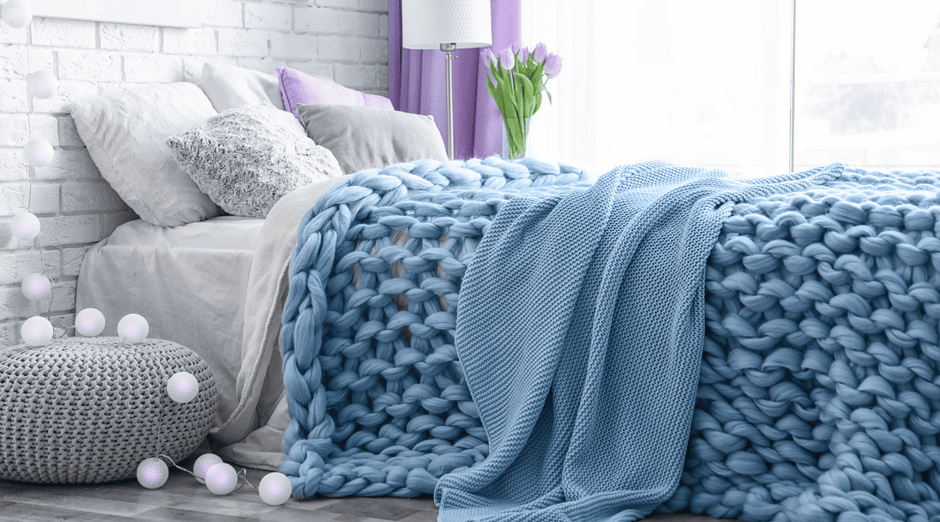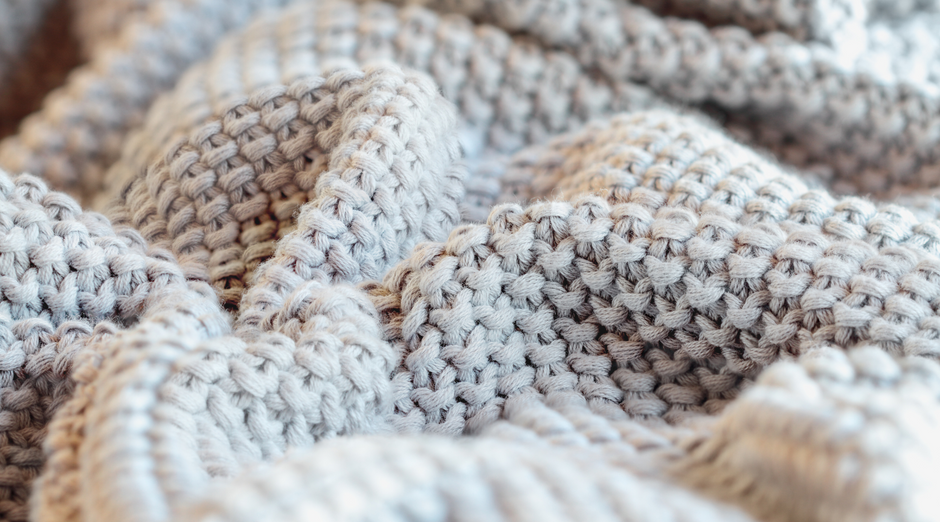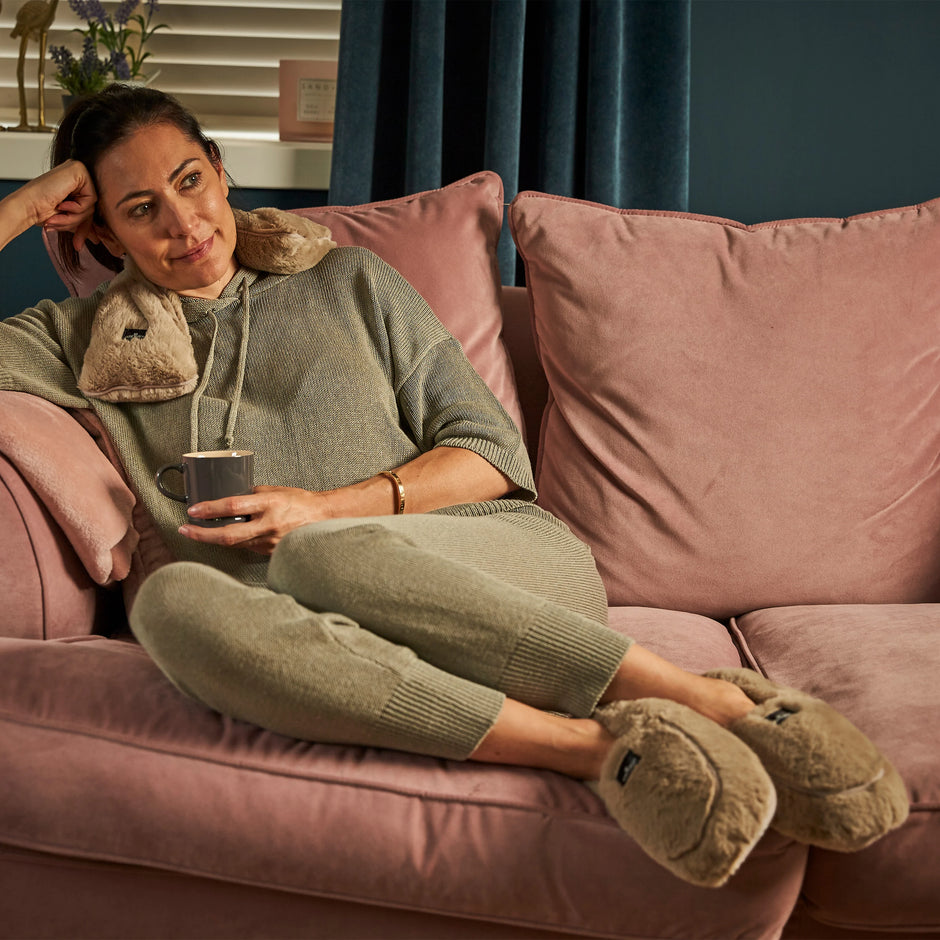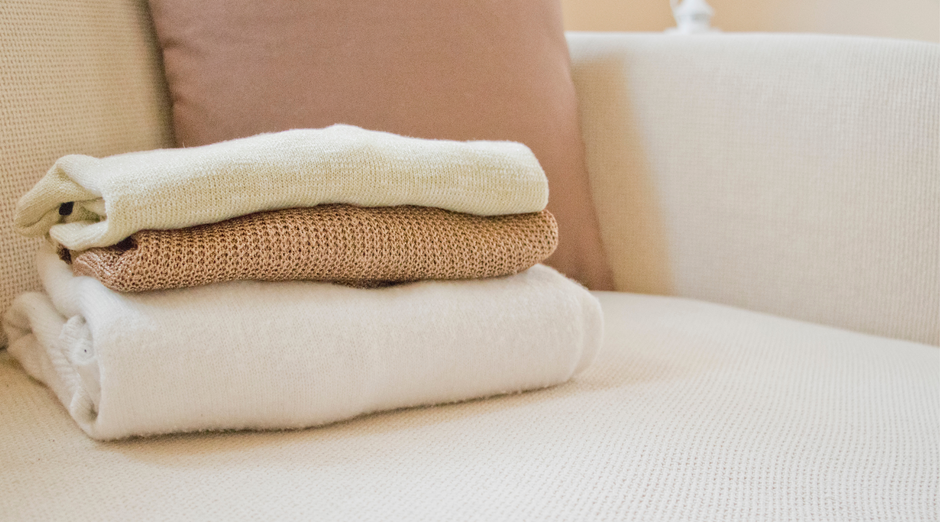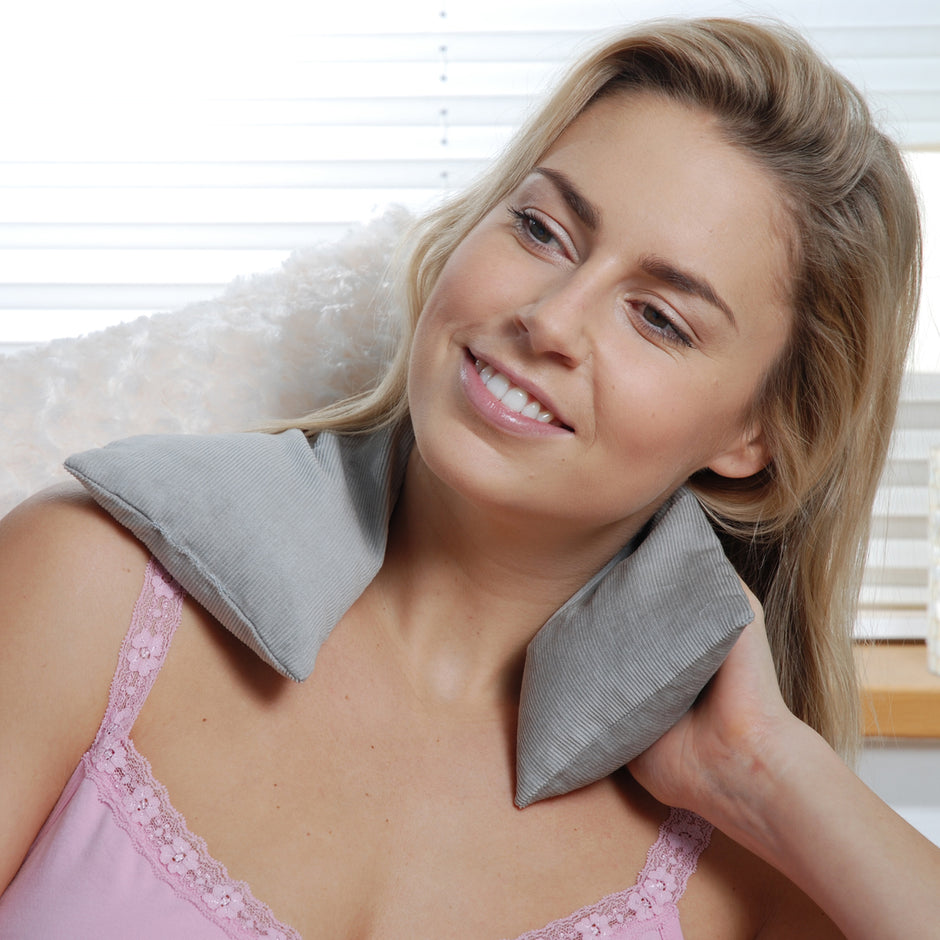Need help understanding bedding terms? Confused and want to understand exactly what blankets, bedspreads, throws and duvets are?
The world of bedding is often confusing and complex. But don't worry, with a little bit of guidance you can become fluent.
This article will provide clear definitions of blankets, bedspreads, throws, and duvets. By the end, you'll be empowered to navigate the world of bedding with confidence. This will ensure you make the correct living room and bedroom décor decisions.
Summary
| Bedding Layer | Type of Bedding | Description | Common Materials | Purpose | Typical Size Range (cm) | Compatible With |
|---|---|---|---|---|---|---|
| 1 | Flat Sheet | Thin, rectangular sheet of fabric positioned directly above the sleeper, serving as the first layer of bedding protection and comfort. | Cotton, linen, silk, polyester | First layer above sleeper; protects the layers on top, including blanket, duvet, etc. | 180x260 to 270x310 | Blanket, Duvet, Duvet Cover |
| 2 | Blanket | Soft, rectangular fabric for additional warmth. | Cotton, wool, fleece, acrylic | Provides additional warmth year-round; optional main layer in warmer weather. | 150x200 to 230x250 | Flat Sheet, Duvet, Duvet Cover |
| 3 | Duvet | Most popular bedding for warmth; filled with soft, insulating materials. | Down, feathers, cotton, polyester | Main warmth layer year-round; can be removed in hot weather. | 200x200 to 260x220 | Flat Sheet, Blanket, Duvet Cover, Bedspread, Throw |
| 4 | Duvet Cover | Protective layer that slips over the duvet. | Cotton, linen, silk, polyester | Protects duvet; enables easy cleaning and design change. | 200x200 to 260x220 | Duvet, Bedspread, Throw |
| 5 | Bedspread | Lightweight, often quilted layer, that drapes over the duvet and entire bed, extending to the ground. | Cotton, polyester, linen, wool, cashmere, silk | Decorative during colder months; optional main layer in warmer weather. | 230x250 to 280x260 | Duvet, Duvet Cover, Throw |
| 6 | Throw | Final layer that can be decorative or add additional warmth. | Cotton, wool, fleece, faux fur, cashmere | Enhances aesthetics; provides warmth, especially on furniture. | 100x100 to 225x225 | Bedspread, Duvet, Duvet Cover, Sofa, Armchair, End of Bed |
What Are Blankets?
Blankets are soft, rectangular fabric layers designed for additional warmth on beds, sofas, and chairs. They can be used both as standalone comfort providers or to complement duvets. This makes them useful for staying cosy during colder weather. They come in various sizes, from big enough for individual use to larger sizes for beds and sofas. They are typically smaller than bedspreads which cover more of the bed.
Blankets are renowned for their softness, thickness, and ability to trap heat and provide insulation. This ensures a comfortable and snug experience. Blankets help to regulate body temperature. They keep individuals warm during colder weather or chilly evenings. They also offer a sense of security and cosiness, promoting relaxation and better sleep quality.
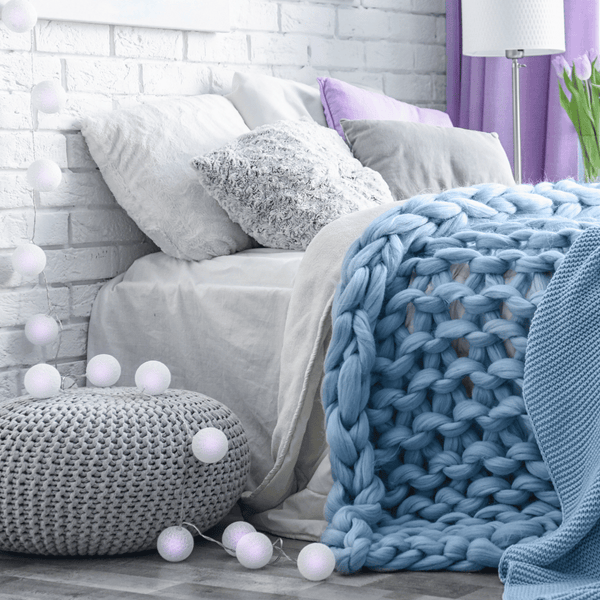
Common Materials and Styles of Blankets
Blankets are crafted from various materials. Each offers unique texture, warmth, and durability characteristics. Common materials include cotton, wool, fleece, acrylic, and blends.
Cotton blankets are lightweight, breathable, and easy to care for, making them suitable for year-round use. Wool blankets are prized for their exceptional warmth and insulation. This makes them ideal for colder climates or chilly nights. Fleece blankets are soft, plush, and cosy. Acrylic blankets offer affordability and versatility in various colours and designs.
Pros and Cons of Using Blankets
Using blankets in your home décor offers several advantages. This includes their ability to provide warmth and comfort, styling options, and ease of maintenance. However, some blankets may shed or pill over time, especially if made from specific materials like fleece or acrylic. Additionally, blankets offer warmth. However, they may provide less insulation than heavier bedding options like quilts or duvets.
What Are Duvets?
A duvet consists of two separate pieces. A soft, flat bag filled with down, feathers, or synthetic fibres encased in a removable cover. A duvet is the most popular bedding layer, providing warmth and insulation during colder months. Duvets are made in a way that keeps the filling spread out evenly, so you stay warm all over.
They come in various sizes to fit different bed dimensions. They are designed to be used with a duvet cover. This protects the duvet from dirt and spills while allowing for easy washing and style changes. Duvets are versatile and can be used independently or with a top sheet for comfort and warmth.
Duvets serve as a cosy layer atop beds, offering insulation to keep individuals warm during colder months. Additionally, duvets enhance comfort by providing a soft and plush surface to sleep under. This promotes better quality sleep.
They also contribute to the aesthetic appeal of a bedroom, adding texture, colour, and visual interest to the overall décor. Moreover, duvets are versatile. They allow for easy customisation and seasonal changes in bedding styles.
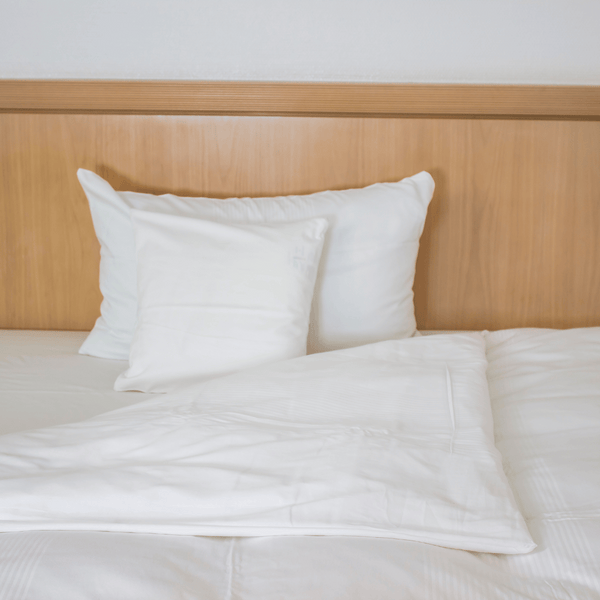
Common Materials and Styles of Duvets
Duvets are crafted from various materials, including down, feathers, cotton, polyester, and blends. Down duvets are prized for their lightweight warmth and luxurious feel. Synthetic duvets offer hypoallergenic alternatives at a more affordable price. Cotton duvets are breathable and easy to care for, making them a popular choice for bedding. Styles range from classic solid colours to bold prints and patterns. This allows you to customise your bedroom décor to reflect your style and preferences.
Pros and Cons of Using Duvets
Using duvets in your bedding ensemble offers several advantages. This includes superior warmth and insulation, as well as versatility in style and design. Their removable and washable covers also make them easier to maintain.
However, some drawbacks include the potential for allergic reactions to down or feathers. The initial cost and maintenance required for high-quality duvets can also be higher.
Overall, duvets are a cosy and stylish addition to any bedroom. They provide comfort and warmth year-round while enhancing the overall aesthetic appeal of your sleep space.
What Are Bedspreads?
Bedspreads are known as quilts in the UK and comforters in the US. They are a lightweight, often quilted layer, that drapes over the duvet and entire bed. They can be decorative coverings that drape over the entire bed, including the pillows, and provide a polished look to your bedding.
Bedspreads come in various sizes to fit different bed dimensions. They are designed for standalone bedding in warmer weather. This is unlike duvets, which typically require separate covers.
Bedspreads are generously sized to cover the bed thoroughly, often reaching the floor. They come in a wide range of designs, colours, and patterns to suit diverse tastes and preferences.
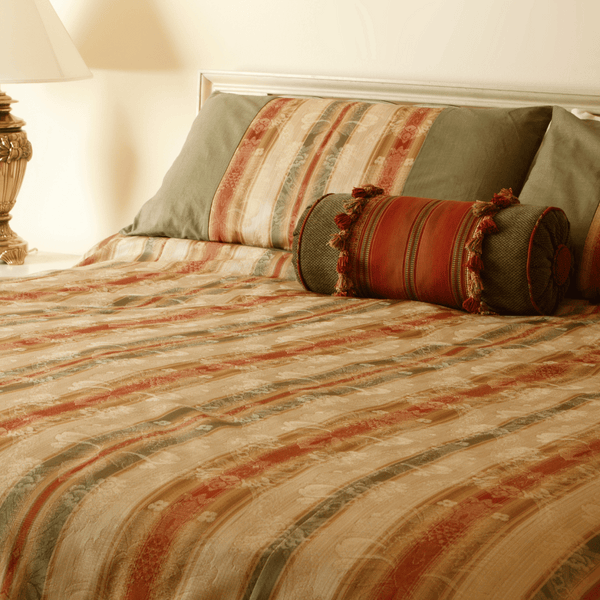
Common Materials and Styles of Bedspreads
Bedspreads are made from materials including cotton, polyester, linen, silk, wool, and cashmere. Each material offers unique characteristics in terms of texture, durability, and maintenance.
Cotton bedspreads are breathable and easy to care for, while silk bedspreads add a luxurious touch to your bedding ensemble.
Styles range from traditional quilted designs with intricate stitching patterns. They also include modern minimalist styles with solid lines and colours. Some bedspreads feature decorative embellishments like embroidery, ruffles, or tassels. These add visual interest and texture to the bedding ensemble.
Pros and Cons of Using Bedspreads
Using bedspreads in your bedroom décor offers several advantages. This includes their decorative impact, ease of maintenance, and versatility. In summer, they can be used with a flat sheet to keep you warm during warmer nights.
However, some bedspreads can be bulky and challenging to fold. You still may require additional blankets or layers during freezing nights for added comfort. Understanding these factors can help you make an informed decision when selecting bedspreads for your bedroom décor.
What Are Throws?
Throws are the outermost layer of bedding, which can be decorative or used to add additional warmth. Although sizes may vary, they are usually smaller than blankets. They range in size from approximately 100x100cm to 225x225cm. In addition to beds, throws are also designed to be draped over furniture, such as sofas and armchairs to provide extra warmth and comfort. Unlike bedspreads or comforters, throws are not intended to cover the entire bed but to add a decorative touch to a room.
Throws serve multiple purposes in home décor. They enhance aesthetic appeal by adding colour, texture, and visual interest to sofas, beds, or chairs. They also provide comfort and support for sitting or lounging.
They allow homeowners to express their style and personality in their living spaces. They do this through various colours, patterns, and designs. Additionally, throws can create visual balance and harmony in a room. They are great at complementing décor elements and contributing to overall cohesion.
Throws also offer a cost-effective way to update and refresh the look of a room according to seasonal changes or thematic preferences. This makes them versatile and practical accessories in interior design.

Common Materials and Styles of Throws
There's a wide range of materials for bed throws available out there. Cotton throws are lightweight and breathable, making them ideal for warmer climates or as summer throws. Wool throws are known for their exceptional warmth and insulation, perfect for chilly winter nights. Fleece throws are soft and cosy, while faux fur throws add a luxurious and tactile element to your décor.
In terms of styles, throws come in various designs, from classic solids and stripes to playful prints and textures. This allows you to find the perfect throw to complement your home décor.
Pros and Cons of Using Throws
Throws offer several benefits, including adding warmth and cosiness to your living space. They also enhance the visual appeal of your décor, providing a quick and easy way to update your home's look. Throws are versatile and can be used in various rooms, from the living room to the bedroom, or outdoors on chilly evenings.
However, there are some drawbacks to consider. Throws may shed or pill over time, especially if made from specific materials like fleece or acrylic. They may need regular washing to maintain their appearance and cleanliness, which can be inconvenient. While throws add a decorative touch to a room, they may provide less warmth than more oversized blankets or comforters. This is particularly true during freezing cold weather.
Final Word
We've discussed various essential types of bedding including blankets, duvets, bedspreads, and throws. From discussing their characteristics to exploring common materials and styles, understanding bedding terminology is critical to making informed choices for your home.
So, let's embrace this knowledge and confidently select the right bedding for your needs. Whether it's a bedspread's elegance or a throw's versatility, your bedding choices can transform your living space.
We go to great lengths to ensure that all our luxury bed throws are easy-to-use, effective and comfortable. You may also find our essential guide useful if you want to learn more about finding your perfect bed throw.
